Every growing business hits a point where spreadsheets, scattered emails, and manual workflows just don’t cut it anymore. Things start slipping through the cracks. Teams spend more time figuring out how to work than actually getting work done. That’s when you realize: it’s not just about hard work — it’s about smarter processes.
That sparked my deep dive into the best business process management (BPM) software. I wanted to find out how today’s top companies are scaling operations, staying agile, and reducing waste — all without losing control.
I spent time reviewing top-rated platforms, digging into user feedback on G2, and testing features hands-on. What stood out was how much BPM tools have evolved — they now offer low-code automation, real-time analytics, and seamless integrations that truly change workflows.
If your team is ready to streamline operations, break silos, and build processes that actually support your growth, keep reading. I’ve rounded up the best business process management software to help you get there.
7 best business process management software: my picks for 2025
- Microsoft Power Automate: Best BPM system for integrating with existing business apps
Automates tasks across Microsoft and third-party apps with powerful low-code capabilities (free trial available, pricing from $15/month).
- Laserfiche: Best for document-driven processes
Streamlines workflows with strong records management and automation features (pricing from $50/user/month).
- Bizagi: Best-rated BPM app for improving workflow
Intuitive drag-and-drop modeling for large-scale business processes (pricing on request).
- Jotform Workflow: Best business process management software for a small startup
Simplifies approvals and processes using customizable online forms (free trial available, pricing from $34/month).
- Appian: Best for enterprise-grade BPM with AI integration
Delivers fast low-code development, scalability, and AI-driven automation (pricing on request).
- ARIS: Best business management tool for large enterprises
Ideal for large organizations focused on compliance and governance (free trial available, pricing from $125/user/month).
- Kissflow: Best for non-technical teams managing workflows
Let's teams quickly create and manage workflows without coding (pricing from $1,500/50 users/month).
* These business process management tools are top-rated in their category, according to G2's Spring 2025 Grid Report. The pricing for all these tools is available on request.
My top 7 business process management software recommendations for 2025
The best business process management software is designed to help organizations streamline operations, improve efficiency, and ensure consistent workflows. As I evaluated these tools, I saw how they simplify process automation, enhance collaboration across teams, and provide valuable insights for continuous improvement, all while ensuring compliance and transparency in every step of the process.
This isn’t just a business need; it’s reflected in the market itself. The global BPM market is projected to expand from $21.51 billion in 2025 to $70.93 billion by 2032, growing at a CAGR of 18.6%.
How did I find and evaluate the best business process management software?
By analyzing G2 reviews and G2’s Grid Reports, I gained a deep understanding of each business process management tool's features, usability, and performance. I relied on verified feedback from professionals with firsthand experience to validate my findings.
Additionally, I utilized AI to analyze user feedback, identifying recurring patterns and insights into how these tools help organizations streamline processes, improve efficiency, and ensure governance. The visuals in this article are a mix of user-generated content from G2 reviews and vendor-provided screenshots.
By combining expert insights and real-world feedback, I’ve compiled a list of the best business process management software to help you choose the right solution for your organization’s needs.
What makes business process management software worth it: my opinion
When evaluating the best business process management (BPM) software, I focus on several key features to determine its effectiveness in streamlining workflows and improving operational efficiency:
- Process modeling and design: A BPM tool should enable users to easily model, design, and visualize complex workflows. I evaluate how intuitive the drag-and-drop interface is for creating process diagrams, and whether the software supports customizable templates to speed up the design process. It’s important for the system to provide tools that allow for the mapping of tasks, responsibilities, and process steps in a way that is easy to understand for both technical and non-technical users.
- Automation and task management: Automation is at the core of BPM software, and I assess how easily the software can automate repetitive tasks, approvals, and notifications. I check if users can configure workflows to trigger actions automatically based on defined rules or inputs. Task management is also a key feature, and I evaluate whether the software allows users to assign tasks, set deadlines, and track progress seamlessly.
- Collaboration and communication: Effective BPM software fosters collaboration across teams. I evaluate whether the platform supports real-time communication, document sharing, and collaborative decision-making. Features like comment threads, task assignments, and notifications are important for keeping everyone on the same page and ensuring that processes stay on track. I also assess whether the software integrates with communication and collaboration tools like Slack, Microsoft Teams, or email, making it easier to share updates.
- Reporting and analytics: The best BPM software should provide powerful reporting and analytics to monitor process performance and identify bottlenecks. I look for tools that allow users to track key performance indicators (KPIs) and generate customizable reports. Real-time analytics help organizations make data-driven decisions and optimize their processes for greater efficiency and cost savings.
- Integration capabilities: BPM software needs to seamlessly integrate with other enterprise systems like CRM, ERP, and document management platforms. I evaluate whether the software provides native integrations with commonly used tools or if it supports APIs to connect with third-party applications. Strong integration capabilities ensure that business processes flow smoothly across different systems, reducing manual work and errors.
- Scalability and flexibility: As organizations grow, their processes become more complex, so scalability is essential. I assess whether the BPM tool can easily scale to accommodate additional users, processes, or locations. The software should also be flexible enough to adapt to changing business needs, whether that’s through custom workflows or process adjustments.
Key insight: Over 64% of enterprises now use BPM tools to streamline operations, and nearly 58% depend on real-time analytics to stay agile.
This data was pulled from G2 in 2025. Some reviews have been edited for clarity.
1. Microsoft Power Automate: Best BPM system for integrating with existing business apps
After reviewing a range of G2 user feedback on Microsoft Power Automate, what stands out to me immediately is how frequently users mention its beginner-friendly interface.
It’s no surprise this tool often shows up on lists of top-rated BPM solutions for automating tasks, since users consistently highlight how easy it is to build and launch automations without coding. I’ve seen many reviewers highlight how easy it is to use, even without any coding experience. A consistent theme in the reviews is that users feel like they’re assembling digital building blocks. From what I’ve read, this drag-and-drop approach makes automation feel accessible and quick to learn, especially for those without a technical background.
I frequently see G2 users praise Power Automate’s flexibility with integrations. According to feedback I gathered, this flexibility is not limited to just Microsoft apps; reviewers mention successful integrations with platforms like Google Workspace, Slack, Twitter, and Salesforce. This breadth of compatibility is a big deal for users operating in hybrid environments with multiple tools in their tech stack.
One standout capability, according to users, is the availability of automation templates. I’ve read multiple reviews where users say the pre-built templates saved them significant time when automating processes like onboarding or expense reporting. A commonly appreciated element is how these templates can be customized users like that they can tweak them for complex workflows without feeling overwhelmed. From what I’ve seen, this balance between simplicity and power is a major draw.

That said, cost is an area where I’ve noticed recurring concerns. Many users feel the subscription pricing reflects the value provided, but it can still be a point of friction for teams looking to scale automation across departments. G2 users frequently note that while the tool delivers meaningful ROI, the growing costs encourage careful prioritization about which workflows truly benefit most from automation.
On performance, I’ve also seen some users mention occasional lag during complex or data-heavy runs. For most teams, this isn’t a consistent roadblock, but reviews suggest delays can sometimes affect time-sensitive tasks. Even so, once processes are complete, users highlight that the platform executes reliably and maintains accuracy across workflows.
Another area where I’ve come across mixed feedback is workflow debugging. According to G2 users, when a flow fails, it can take some effort to pinpoint the exact issue. The run history and logs are helpful, but reviewers sometimes feel like they’re "playing detective" due to vague error messages or unclear steps in the process. Still, many agree that with patience and familiarity, troubleshooting becomes easier over time, and the platform’s support resources can be a useful complement when resolving these issues.
What I like about Microsoft Power Automate:
- I’ve seen many G2 users highlight how easy it is to use, even for non-technical folks like me who value drag-and-drop simplicity.
- I’ve read multiple reviews that praise how well Power Automate integrates with both Microsoft and third-party tools like Slack and Salesforce.
What G2 users like about Microsoft Power Automate:
"As a project manager, I love being able to automate the organization of all the attachments I receive into the Teams folders for the project, automate follow-up emails on open actions from my action register, and easily create flows that I can later use in a PowerApp."
- Microsoft Power Automate Review, Beatriz W.
What I dislike about Microsoft Power Automate:
- I’ve noticed G2 users raising concerns about subscription costs, especially when trying to scale automation across multiple teams.
- I’ve come across recurring feedback on G2 where users find it challenging to debug failed flows due to vague error messages.
What G2 users dislike about Microsoft Power Automate:
"The desktop flow runner occasionally feels sluggish or crashes if the UI changes even slightly in the target application. Debugging issues can sometimes be time-consuming, especially when error messages are vague. Additionally, the licensing model for RPA features can be confusing and expensive for small teams or occasional users."
- Microsoft Power Automate Review, Tulika K.
2. Laserfiche: Best for document-driven processes
Laserfiche stands out as a highly adaptable platform that users frequently describe as a powerful solution for process automation. I’ve seen multiple reviewers compare it to a “Swiss Army knife” for digital transformation. Whether it’s a simple form or a multi-step workflow that includes table storage and customized PDFs, users say the platform is versatile enough to handle both with ease. There’s a recurring sentiment that “if you can think of it, Laserfiche can automate it.”
A commonly appreciated element in user feedback is Laserfiche’s internal automation capabilities. I frequently see G2 users mention how the platform goes beyond public-facing forms and offers robust backend functionality. Reviewers describe workflows that auto-classify documents, route approvals, and update metadata, all without manual input. Based on the feedback I’ve reviewed, this backend automation appears to significantly reduce administrative burden and increase consistency.
Another standout capability, according to users, is Laserfiche’s impact on operational efficiency. Several reviewers from public sector organizations highlight how it has saved hundreds of hours by replacing manual tasks with automated workflows. There’s a strong consensus that it doesn’t just digitize forms; it helps transform the entire information management infrastructure.

However, looking at broader review trends, I’ve seen users mention some challenges with customization in forms, particularly around email notifications and task reassignment. While the platform handles complex logic and workflow design well, G2 users often note they need to rely on workarounds when trying to customize communication templates or reassign tasks dynamically. That said, the overall flexibility of the platform still gives teams plenty of room to build tailored workflows.
I’ve also come across feedback around form field validation. Multiple reviewers point out occasional issues where required fields on public-facing forms don’t always validate as expected. Even when fields are marked as mandatory, submissions sometimes come through with data missing. Still, users agree that once the forms are functioning properly, they provide a smooth experience and significantly reduce manual effort.
Lastly, one recurring theme I’ve noticed relates to system slowness. Some G2 users report occasional performance dips that don’t follow a clear pattern, which can affect productivity during peak usage times. Even so, most highlight that outside of these instances, the platform runs efficiently and supports high volumes of work across departments.
What I like about Laserfiche:
- I’ve seen G2 users call Laserfiche a “Swiss Army knife” for automation, and I get why they say it handles everything from simple forms to complex workflows.
- I’ve read feedback praising how internal automation reduces manual admin work by auto-classifying documents and routing approvals efficiently.
What G2 users like about Laserfiche:
"My favorite Laserfiche product has to be Workflow. It is so much more robust and flexible than the workflow products that come with our other applications, specifically PowerSchool BusinessPlus ERP. Creating a workflow in Laserfiche Workflow is easy with its drag-and-drop features. It offers such a wide variety of tasks that it has become our go-to product for integrating with other systems to add functionality."
- Laserfiche Review, Verified User in Education Management
What I dislike about Laserfiche:
- I’ve noticed G2 users mention issues customizing forms, especially around email alerts and dynamic task reassignment, which forces them into workarounds.
- I’ve come across multiple G2 reviews where form field validation fails, causing missing data in submissions and extra manual cleanup.
What G2 users dislike about Laserfiche:
"I wish there were a setting to notify workroom members when a new event or board book is created. It would also be helpful to have a better way to create collaborative documents in the library. I’m looking to make a spreadsheet or working document available for members to edit, but most of my board members don’t have Microsoft accounts, which makes it difficult."
- Laserfiche Review, Verified User in Transportation
3. Bizagi: Best-rated BPM app for improving workflow
Bizagi is frequently praised for its flexibility and customization capabilities. Users often highlight its high level of customization, especially through JavaScript code and plugins, as one of the platform’s most valuable features.
G2 reviewers consistently mention how this allows organizations to tailor the platform to their specific workflows, providing a level of adaptability that doesn’t feel rigid or limiting. Many users appreciate this flexibility, as it enables them to create bespoke solutions that meet their unique business needs.
I’ve also seen G2 reviewers frequently call out the support for reusable forms and rules, which is another feature that seems to be a major advantage. According to feedback from users, the ability to build once and apply across multiple workflows has significantly improved efficiency, saving time and effort during development. This capability is often praised for maintaining consistency and reducing redundancy in process modeling, helping teams scale their automations without reinventing the wheel each time.
Another feature that G2 users often appreciate is the availability of pre-built components for system integration. Many reviewers mention how these connectors have simplified the integration process, enabling them to link Bizagi with other internal tools without needing to custom-code every integration. This has consistently been seen as a time-saver, with several users noting that it significantly reduced implementation time and complexity during onboarding.
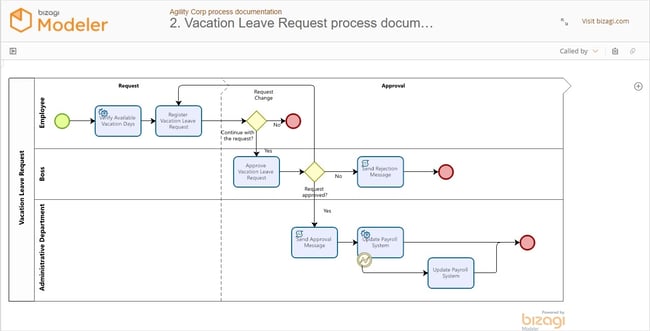
However, from what I’ve seen in G2 reviews, managing different versions of Bizagi has been a common pain point for many users. I’ve come across feedback from several reviewers who mention facing incompatibility issues between various editions, which often led to difficulties when deploying new developments. Some users expressed frustration with how challenging it could be to apply changes or roll out updates, especially when dealing with the versioning system.
Additionally, I’ve noticed that accessing the web version of Bizagi can be inconsistent, which has created confusion and delayed adoption. G2 reviewers have mentioned that the web version’s accessibility depends on the version being used by different teams or departments, which often leads to challenges in onboarding new users across business units. This inconsistency appears to be a recurring issue that affects smooth adoption in larger organizations.
Finally, the lack of support for Mac operating systems is another area where I’ve seen users express noticeable dissatisfaction. Many reviewers mention that in organizations with a significant number of Mac users, this limitation created a barrier to using the platform. To work around this, some teams had to set up virtual machines for Mac users to access Bizagi, which added unnecessary complexity and reduced the overall user experience. This seems to be a significant drawback for businesses with a diverse tech environment.
What I like about Bizagi:
- I’ve seen many G2 users highlight Bizagi’s high level of customization, particularly with JavaScript and plugins, making it adaptable to unique workflows.
- I’ve noticed users frequently praise the reusable forms and rules feature, which has significantly improved efficiency by reducing redundancy in process modeling.
What G2 users like about Bizagi:
"Our HR team used Bizagi to automate the employee onboarding process, which was previously managed through emails, spreadsheets, and manual approvals. With Bizagi, we have built processes that seamlessly integrate our HR, IT, and Finance departments. I really like its ability to visually design workflows and map out the entire onboarding journey."
- Bizagi Review, Jack T.
What I dislike about Bizagi:
- I’ve come across G2 user feedback where users struggle with versioning issues, often facing incompatibility between different Bizagi editions.
- I’ve seen multiple G2 users express dissatisfaction with the lack of Mac OS support, creating barriers for teams with a significant number of Mac users.
What G2 users dislike about Bizagi:
"While configuring SLA alerts, we encountered difficulties in setting up custom notifications. However, their customer support was efficient and provided a brief walkthrough that resolved the issue within a day."
- Bizagi Review, Felix M.
Keep every process on track with project management tools that bring structure, clarity, and accountability to your team’s workflow.
4. Jotform Workflows: Best business process management software for a small startup
I’ve seen a lot of praise for Jotform Workflows’ ease of use. Many users, like myself, have commented on how straightforward it is to set up workflows. The drag-and-drop interface is frequently highlighted as a major strength, allowing even non-tech-savvy users to create automations quickly and easily.
Another feature that G2 users often call out is the platform’s wide range of integrations. Based on the feedback I’ve reviewed, users really value how easily Jotform connects with various apps and tools, which helps streamline their processes. Integrating with CRMs, email marketing platforms, and file storage systems is a common theme in reviews, with many users mentioning how these seamless connections save them a lot of time by automating data flow between platforms.
One feature that I’ve noticed users frequently highlight in reviews is the real-time updates provided by Jotform Workflows. Many G2 reviewers mention how helpful it is to see live status updates on task completion. This feature makes it easier to manage workflows and track progress, especially when collaborating with teams or handling complex tasks. It seems that this functionality is particularly appreciated for its ability to keep everyone on the same page, making the management process smoother.
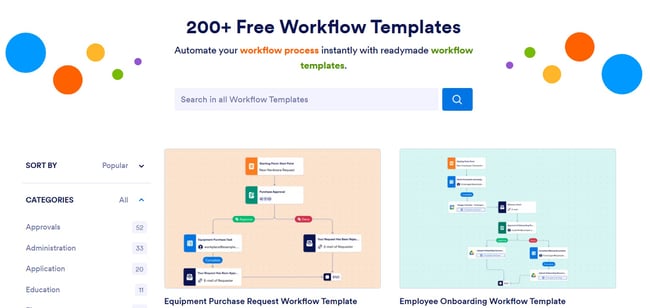
However, there are also areas where I’ve seen users express challenges. Many appreciate that the platform offers a free plan to get started, but feedback often points to the limitations of that tier — particularly the restricted number of submissions. I’ve come across multiple reviews where users mention that testing forms count towards the quota, which can make it difficult to thoroughly test before deployment. That said, most agree that the free plan still provides a valuable way to explore core features and evaluate the platform’s potential.
Additionally, I’ve also noticed comments about the inability to increase submission limits on the free plan. While upgrading to a paid plan unlocks broader functionality, several G2 users note that this can feel restrictive for teams with occasional or lighter needs. Still, reviewers often highlight that the paid tiers offer strong value, and many suggest that introducing more flexible options, like add-on submissions, would make an already solid platform even more accessible.
What I like about Jotform Workflows:
- I’ve seen many users highlight Jotform Workflows’ ease of use. Its drag-and-drop interface is especially appreciated for its simplicity and accessibility, even for non-tech-savvy users.
- Based on the feedback I’ve reviewed, Jotform’s extensive integration capabilities stand out, with users praising how easily it connects with other apps like CRMs, email marketing platforms, and file storage systems, streamlining their processes.
What G2 users like about Jotform Workflows:
"What’s great about Jotform is that it allows for conditional logic with multiple outcomes based on user selections. It even lets you redirect to a custom page, which I’ll be using, leveraging various selections that appear in the URL and influence the end result. You can also build a PDF where only the selected answers are shown, which is exactly what I’ve been looking for. Plus, I can have the site link directly to the PDF result using a submission ID."
- Jotform Workflows Review, Patrick S.
What I dislike about Jotform Workflows:
- I’ve come across multiple G2 reviews where users express frustration with the limitations of the free plan, especially the restricted number of submissions that can make thorough testing difficult.
- I’ve noticed several G2 reviewers mention their disappointment with the inability to increase submission limits on the free plan, feeling that upgrading to a paid plan is a restrictive option for those with lighter needs.
What G2 users dislike about Jotform Workflows:
"At times, it can feel a bit limited when dealing with very complex or highly customized processes. Some users might find certain advanced features or deeper automation options missing or not as flexible as they'd like. Additionally, while the interface is generally user-friendly, navigating some of the more detailed settings or troubleshooting issues can sometimes be a little confusing or time-consuming. Overall, it’s a solid tool, but it might not cover all the needs for very intricate workflows."
- Jotform Workflows Review, Verified User in Events
5. Appian: Best for enterprise-grade BPM with AI integration
I’ve noticed that Appian is highly regarded for its ability to streamline the idea-to-solution process.
One feature that G2 users frequently highlight is Appian’s low-code setup, which allows users to easily create interfaces, receive feedback from stakeholders, and quickly iterate on designs. Many reviewers express appreciation for how this setup accelerates development, ensuring that applications are closely aligned with business needs. According to the feedback I gathered, this speed and efficiency are major selling points for users in various roles, allowing them to move from concept to delivery faster than ever before.
Another aspect that stands out to me in G2 reviews is Appian’s integration of AI tools. From what I’ve seen, many users are impressed by how Appian has incorporated AI into its platform, particularly for automating tasks and providing predictive insights. G2 reviewers often mention how these AI capabilities enhance the overall value of the platform, positioning it as not just keeping up with industry trends but ahead of the curve. This forward-thinking approach seems to be a key reason why many users choose Appian over other platforms.
Something else I frequently see praised in G2 reviews is Composer, which allows non-technical team members to actively contribute to development. Multiple users note how this feature has significantly sped up the development process, enabling better collaboration between technical and non-technical teams. The ability for business users to be more involved in app creation has fostered better alignment and improved the end product, which is a consistent theme in the feedback I’ve reviewed.
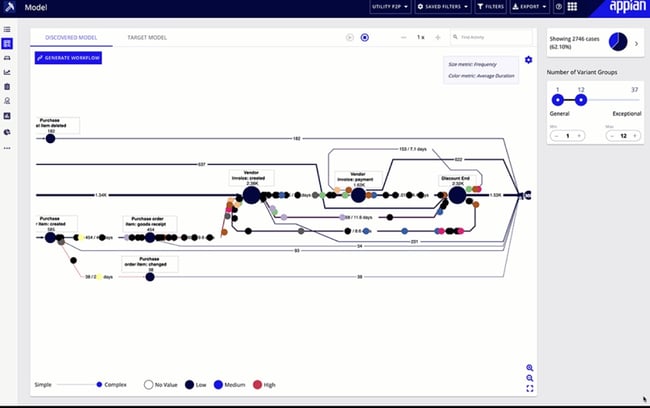
However, I’ve also come across some limitations that G2 users mention. One common issue seems to be the lack of a debugger in the object manager. Negative feedback often centers around this missing tool, with reviewers expressing frustration that troubleshooting becomes more difficult without an integrated debugging feature. Many users have to rely on workarounds, which can slow down the development process, a challenge that is frequently pointed out in G2 reviews.
Another area of concern I’ve seen in reviews is the limited UI customization options. G2 users have mentioned that while the UI styles are functional, there aren’t enough customization options to fully match branding or design requirements. This seems to be a recurring frustration, as some users find it hard to meet certain visual standards due to these limitations.
Lastly, the small input fields for expression rule parameters are another minor dissatisfaction mentioned in G2 reviews. I’ve read multiple users express frustration with the cramped input boxes, which make it difficult to view long strings of code or text. Many reviewers feel that larger, more spacious fields would make the development process smoother and more user-friendly.
What I like about Appian:
- I’ve seen numerous G2 users highlight Appian’s low-code setup, which accelerates the idea-to-solution process. It allows teams to quickly create interfaces, gather feedback, and iterate, significantly improving speed and efficiency.
- Based on the feedback I gathered, users also appreciate Appian’s integration of AI tools, which enhance the platform’s value by automating tasks and offering predictive insights, positioning Appian ahead of industry trends.
What G2 users like about Appian:
"What I love about this BPM tool is the ease of development using its low-code platform, the speed of delivery, and the faster way of building multiple features. Its integration capabilities make implementation much easier when working with multiple applications."
- Appian Review, Jai J.
What I dislike about Appian:
- A common pain point mentioned by G2 users is the absence of a debugger in the object manager. This makes troubleshooting more difficult and leads to reliance on workarounds that slow down development.
- Another challenge I’ve seen on G2 revolves around the limited UI customization options. Users find it challenging to fully align the interface with their branding or design standards due to insufficient flexibility in customization.
What G2 users dislike about Appian:
"Although low-code development is something Appian promotes and encourages, almost every developer ends up relying solely on the expression editor, which means there's still a significant need for writing code. However, Appian doesn't provide as much support for this, particularly when it comes to the user interface for the expression editor."
- Appian Review, Verified User in Non-Profit Organization Management
6. ARIS: Best business management tool for large enterprises
I’ve found that ARIS is frequently praised as a solid and easy-to-use tool for business process management.
One feature that G2 users consistently highlight is its ability to document business processes using BPMN 2.0 notations, which is a widely accepted standard. From what I’ve seen in the reviews, many users appreciate how this functionality helps ensure clarity and consistency in process documentation, making it a valuable tool for both process experts and those new to the field.
Another aspect that comes up often in G2 reviews is the intuitive folder structure and function allocation diagrams. G2 reviewers frequently mention how easy it is to create and organize these diagrams, which helps maintain a logical structure when working on complex processes. The user interface is also regularly noted as being customer-centric and simple to navigate, which makes it accessible to a broad range of users. This ease of use is a recurring theme in feedback and is often highlighted as a major strength of the tool.
G2 users also seem to really appreciate ARIS’ seamless integration with other software. From what I’ve gathered, many users find that connecting ARIS with other tools is a smooth experience, which reduces the complexity of managing multiple systems. A common theme in the reviews is that this integration feature helps streamline workflows and eliminates many of the headaches typically associated with system compatibility.
Something I frequently see G2 users highlight is the availability of learning resources, including free certifications at various levels. Many reviewers note how these resources help them deepen their understanding of the tool, whether they’re beginners or advanced users. I’ve also noticed a lot of praise for the process mining capabilities of ARIS. Users mention that this feature provides valuable insights into business operations, helping them uncover inefficiencies and areas for improvement, which seems to be a major selling point for process optimization.

For companies seeking premium business process management software with a free trial, ARIS stands out as an enterprise-grade solution. Its trial option allows large organizations to test process mapping, governance, and analytics features before committing to full deployment.
That said, while ARIS has many positive attributes, I’ve also come across feedback highlighting its high acquisition and ongoing servicing costs. Users appreciate the depth of advanced capabilities, but some note that these can come with a steep price tag, which may be challenging for businesses working within tighter budgets. Even so, reviewers frequently point out that for enterprises prioritizing robust process governance, the investment can deliver significant long-term value.
I’ve also seen comments about compatibility issues arising from frequent updates. While these updates are designed to improve functionality, some users mention that they occasionally introduce new issues that require troubleshooting. Still, most agree that ARIS’s continuous development reflects its commitment to innovation, and once issues are resolved, the platform’s strong governance and analytics tools remain highly reliable.
What I like about ARIS:
- Based on G2 feedback, users often highlight how Boardable’s document organization simplifies meeting preparation. Many appreciate having everything in one place, saving time and reducing stress before meetings.
- A consistent theme in user reviews is the positive feedback on the task assignment and tracking feature. This feature improves team accountability by making it easier to follow up on action items after meetings.
What G2 users like about ARIS:
"ARIS from Software AG has proven indispensable for our organization. Its intuitive process modeling and analysis tools empower us to create and optimize business processes with ease. The platform’s seamless integration and scalability have effectively supported our growth and digital transformation efforts. We highly recommend ARIS for organizations seeking to enhance operational efficiency and agility. Once you start using ARIS, you'll quickly realize its power and how often you'll rely on it. Its outstanding customer support is well-defined and consistently highly rated."
- ARIS Review, Karim H.
What I dislike about ARIS:
- I’ve come across noticeable dissatisfaction on G2 around the messaging system in Boardable. Several users find it basic and ineffective, which leads some to revert to email for important updates.
- From my observation of G2 reviews, negative feedback often focuses on the interface and navigation. Users mention that it can be clunky, making it difficult to locate past meeting notes or older documents efficiently.
What G2 users dislike about ARIS:
"Creating custom functions and reports in ARIS is often challenging. Its integration with ARCM can also be problematic, frequently requiring maintenance after each service release."
- ARIS Review, Verified User in Banking
7. Kissflow: Best for non-technical teams managing workflows
Kissflow stands out for its ability to make organizations more agile. Many G2 users, including those in my own organization, highlight how the platform enables citizen developers to digitize processes quickly. This flexibility has been a recurring theme in reviews, with users noting that even non-technical staff can build solutions and automate workflows, drastically reducing execution time. From what I’ve seen, this ability to empower users without coding expertise has been key in driving digital transformation efforts.
This aligns with broader trends — Kissflow reports that around 80% of businesses are accelerating automation initiatives, and nearly half aim to automate all repetitive tasks. The platform’s focus on no-code process automation positions it well for this shift.
Another commonly appreciated feature, according to G2 users, is the active and helpful community that Kissflow supports. A consistent theme in the reviews is that users find the community to be a great resource when they have questions or need guidance. This has been especially helpful for us as well, as we’ve been able to reach out for assistance and get quick responses, which makes the platform feel well-supported.
Additionally, the APIs are often highlighted positively, as many users appreciate how easy it is to integrate Kissflow into existing workflows. This seamless integration has been a significant benefit for our organization.
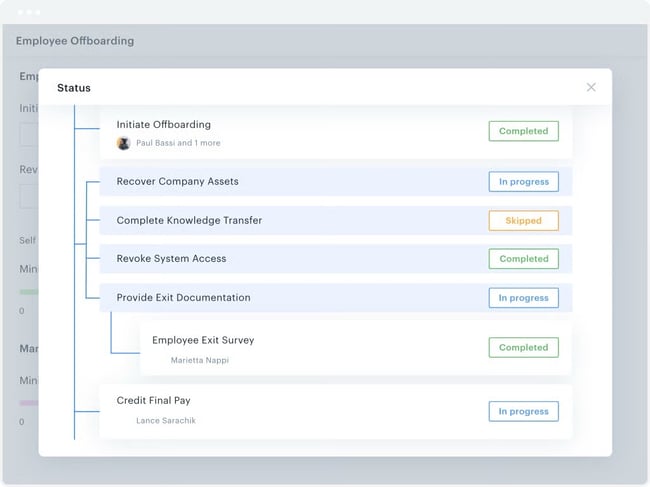
However, based on my review of G2 user feedback, permissions within Kissflow are an area where some users see room for improvement. Many appreciate the platform’s collaborative approach, but I’ve noticed reviewers mention that permissions can sometimes feel inconsistent across items developed by different teams. This lack of uniformity can add extra steps to managing access. That said, once permissions are aligned, users note that collaboration flows smoothly and cross-team visibility becomes a real strength of the platform.
Another theme I’ve come across in reviews relates to the platform’s privacy features. Users value how easy it is to share data across processes, but several point out that, by default, data is visible to everyone, which may not suit businesses handling sensitive information. Still, most agree that with proper configuration, Kissflow provides flexible controls, and teams appreciate that privacy can be adjusted to meet different organizational needs.
What I like about Kissflow:
- I’ve seen many G2 users appreciate Kissflow for enabling citizen developers to digitize processes quickly and empowering non-technical staff to automate workflows without coding.
- I’ve read multiple reviews highlighting the active and helpful community Kissflow supports, which users find valuable for troubleshooting and guidance.
What G2 users like about Kissflow:
"I love the easy visuals — so many programs I’ve used in the past were clunky and difficult to navigate. Kissflow is easy on the eyes. I appreciate that I can control changes and updates myself, without relying on anyone else to make them for me. As I’ve learned more about its capabilities, my workflows have evolved into a kind of virtual office assistant. It has made training a breeze, as the workflows guide employees with checkboxes and pre-programmed explanations. Getting started is very easy, and the customer service is epic. Kissflow is now an integral part of our daily office routine. It’s marvelous!"
- Kissflow Review, Cindi H.
What I dislike about Kissflow:
- I’ve noticed recurring G2 user feedback about inconsistent permissions across items developed by different teams, which can cause confusion and additional effort to manage access.
- I’ve come across G2 review regarding the platform’s privacy features, with many users, including myself, pointing out that data within processes is shared by default, requiring manual adjustments to ensure privacy
What G2 users dislike about Kissflow:
"Although Kissflow does support customization, it often feels quite limited. For example, in one of our use cases, we wanted to use sequence numbers or request numbers in a table, but Kissflow was unable to accommodate that. The reporting features could also be enhanced."
- Kissflow Review, Verified User in Information Technology
The BPM landscape is vast and continuously evolving. Here are some more tools that offer compelling capabilities for specific use cases or business models. If you're still exploring options, the following are also worth considering:
- SS&C Blue Prism Intelligent Automation Platform: Best for enterprises aiming to scale robotic process automation (RPA) across complex operations. It offers intelligent automation with AI and machine learning capabilities, strong audit trails, and centralized control — ideal for highly regulated sectors like finance and healthcare. Free trial available.
- Quixy: This platform is best for business users who want to create automated workflows and custom applications without writing a single line of code. Its no-code platform enables rapid development, visual modeling, and smooth integration with third-party tools. Pricing is available upon request.
- Nintex: Best for organizations invested in Microsoft ecosystems such as SharePoint and Office 365. Nintex excels in process mapping, workflow automation, and document generation. It offers a user-friendly design with powerful connectors for Salesforce, SAP, and more. Pricing available upon request.
- BIC Platform: Best for companies focused on end-to-end business process management — from modeling and execution to optimization and compliance. It features a modern UI, detailed analytics, and strong governance capabilities. Pricing available upon request.
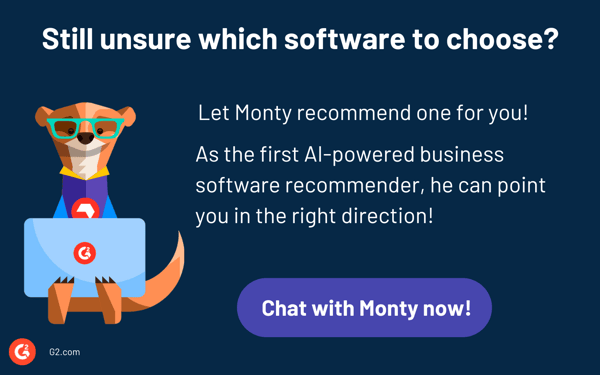
Business process management software: Frequently asked questions (FAQs)
1. How do I know if BPM software is right for my business?
BPM software is ideal for businesses looking to optimize and standardize complex processes. It is particularly useful for organizations with repetitive, manual, or paper-based workflows that need automation, visibility, and improved process efficiency.
2. What are the benefits of low-code BPM software?
Low-code BPM software allows non-technical users to create and automate workflows without extensive programming knowledge. This accelerates the development process, reduces reliance on IT resources, and enables faster adaptation to changing business needs.
3. What’s the leading BPM software for medium-sized companies?
Kissflow is a strong fit for medium-sized companies thanks to its no-code builder and scalable governance; Bizagi is ideal if you need advanced modeling and reusable rules.
4. Which BPM software is best for reducing operational costs?
Microsoft Power Automate (low-code automation across your existing stack) and Laserfiche (paper-to-digital workflows + records management) are frequently cited for cutting manual work and rework.
5. Which BPM tool is best suited for large organizations with a need for governance and compliance?
For large businesses that need to focus on process governance, compliance, and optimization, ARIS is the best option. It’s designed for process mapping and governance, offering extensive tools for monitoring and optimizing workflows, ensuring compliance with industry regulations.
6. Which BPM tool should I choose if I need complex workflow modeling?
Bizagi stands out for complex and scalable workflow modeling. It offers a drag-and-drop process modeling interface and is perfect for medium — to large organizations that require flexible and customizable workflows.
7. What BPM tool is best for businesses that want to integrate AI into their processes?
If your business requires rapid development of BPM applications with AI capabilities, Appian is the ideal tool. It offers low-code development combined with AI-powered features to streamline business processes effectively.
It's not 1993
There’s no reason to rely on manual workflows that waste time and cause confusion. The right BPM software can transform how your team operates, automating repetitive tasks, clarifying responsibilities, and keeping everything on track.
I’ve realized how impactful the right platform can be in transforming workflow efficiency. Each solution brings its own strengths, whether you’re automating tasks, visualizing processes, ensuring compliance, or enhancing team collaboration.
I hope these insights guide you in selecting the best BPM software for your organization. Let’s face it: no one wants to continue juggling inefficient processes that slow things down!
Tired of repetitive manual tasks? Let robotic process automation software handle them while your team focuses on more strategic work.
.png?width=400&height=150&name=Untitled%20design%20(56).png)









.png)

.png)

.png)

